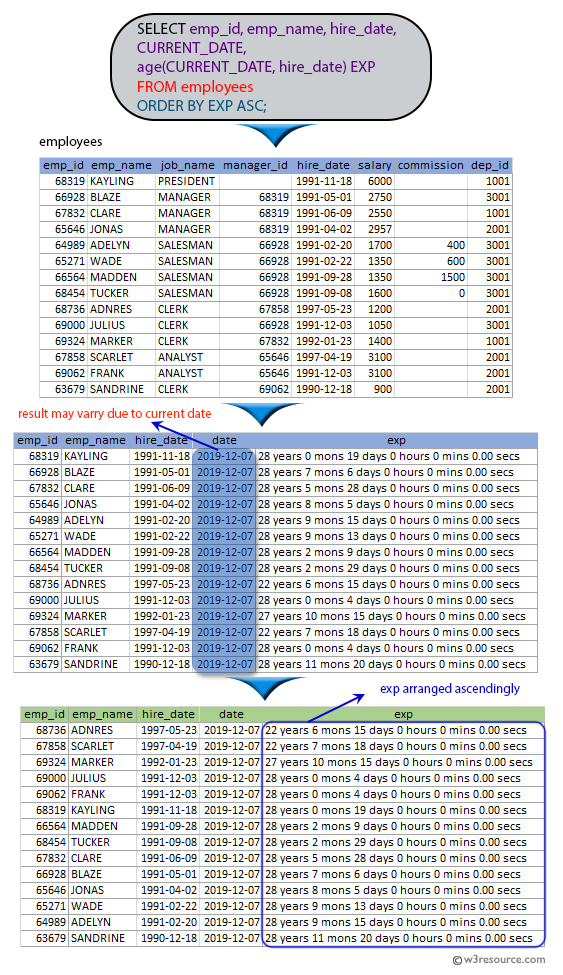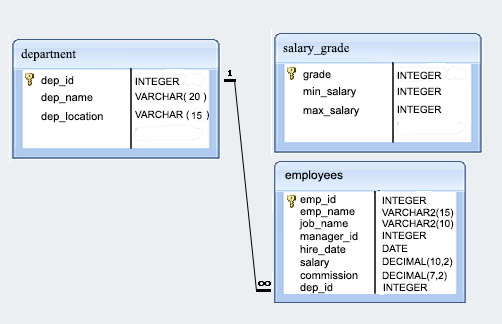SQL Exercise: List employees in ascending order on their experiences
[An editor is available at the bottom of the page to write and execute the scripts.]
80. From the following table, write a SQL query to list the employee ID, name, hire date, current date and experience of the employees in ascending order on their experiences.
Pictorial Presentation:

Sample table: employees
Sample Solution:
SELECT emp_id,
emp_name,
hire_date,
CURRENT_DATE,
age(CURRENT_DATE, hire_date) EXP
FROM employees
ORDER BY EXP ASC;
Sample Output:
emp_id | emp_name | hire_date | date | exp --------+----------+------------+------------+------------------------- 68736 | ADNRES | 1997-05-23 | 2018-02-01 | 20 years 8 mons 9 days 67858 | SCARLET | 1997-04-19 | 2018-02-01 | 20 years 9 mons 12 days 69324 | MARKER | 1992-01-23 | 2018-02-01 | 26 years 9 days 69062 | FRANK | 1991-12-03 | 2018-02-01 | 26 years 1 mon 29 days 69000 | JULIUS | 1991-12-03 | 2018-02-01 | 26 years 1 mon 29 days 68319 | KAYLING | 1991-11-18 | 2018-02-01 | 26 years 2 mons 13 days 66564 | MADDEN | 1991-09-28 | 2018-02-01 | 26 years 4 mons 3 days 68454 | TUCKER | 1991-09-08 | 2018-02-01 | 26 years 4 mons 23 days 67832 | CLARE | 1991-06-09 | 2018-02-01 | 26 years 7 mons 22 days 66928 | BLAZE | 1991-05-01 | 2018-02-01 | 26 years 9 mons 65646 | JONAS | 1991-04-02 | 2018-02-01 | 26 years 9 mons 29 days 65271 | WADE | 1991-02-22 | 2018-02-01 | 26 years 11 mons 7 days 64989 | ADELYN | 1991-02-20 | 2018-02-01 | 26 years 11 mons 9 days 63679 | SANDRINE | 1990-12-18 | 2018-02-01 | 27 years 1 mon 14 days (14 rows)
Explanation:
The said query in SQL that selects the emp_id, emp_name, hire_date, CURRENT_DATE, and EXP columns for each employee in the employees table, sorted in ascending order by their years of experience.
The age() function calculates the difference in years between the hire_date and CURRENT_DATE and the resulting column is aliased as EXP.
Go to:
PREV : Employees work as SALESMEN, sorted by their salary.
NEXT : Sort employees by designation, joining after 1991.
Practice Online
Sample Database: employee

Have another way to solve this solution? Contribute your code (and comments) through Disqus.
What is the difficulty level of this exercise?
Test your Programming skills with w3resource's quiz.
